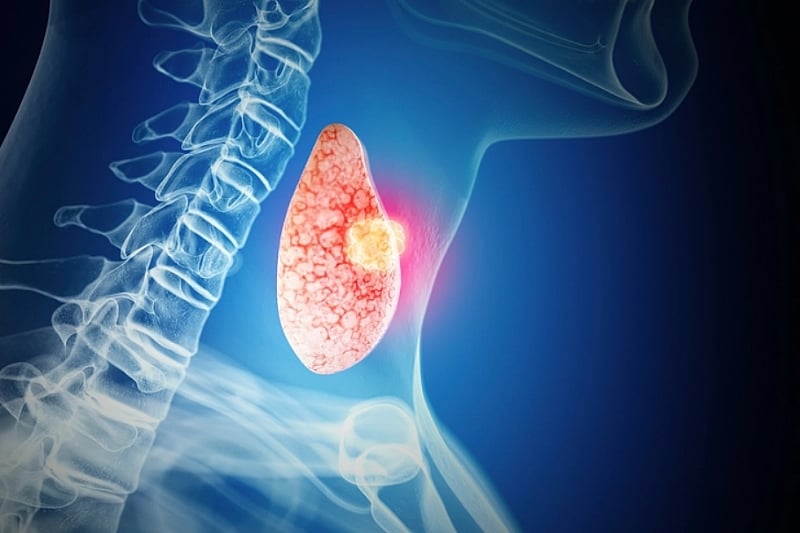Thyroid cancer, a relatively silent adversary, originates in the butterfly-shaped gland nestled at the base of the neck. This gland plays a pivotal role in regulating energy levels, metabolism, and exercise tolerance. However, in its early stages, thyroid cancer rarely disrupts hormone production, masking its presence and delaying detection. Symptoms typically emerge only when the tumor grows large enough to be palpable or visible, or when it begins to encroach upon surrounding tissues. While initial manifestations may be subtle, vigilance towards even minor changes can be crucial for early diagnosis and timely intervention.
One of the foremost indicators of thyroid cancer is a persistent lump or swelling in the neck, often located in the front or to the side. This lump may be firm or slightly tender to the touch. While not all neck lumps are cancerous, any persistent swelling warrants a medical evaluation to eliminate the possibility of thyroid cancer. Changes in voice, such as hoarseness, weakness, or a persistent raspy quality, can also signal a potential problem. This may indicate involvement of the recurrent laryngeal nerve, a nerve that runs in close proximity to the thyroid gland. Such vocal changes are particularly concerning in the absence of a cold or other respiratory infection.
Difficulty swallowing, characterized by a sensation of something lodged in the throat or discomfort during swallowing, is another subtle yet significant symptom. Growing tumors can exert pressure on the esophagus, hindering the passage of food and liquids. Persistent pain in the front of the neck, potentially radiating towards the ears or jaw, could also indicate thyroid irritation or the presence of a growing tumor. While neck pain alone is not necessarily indicative of cancer, it should be investigated in conjunction with other symptoms.
Swelling in the lymph nodes of the neck is another potential sign. The thyroid gland can influence these lymph nodes, causing them to enlarge. New, firm lumps under the jaw or elsewhere in the neck, particularly if accompanied by other thyroid-related symptoms, require medical attention. Shortness of breath or restricted airflow can occur if a thyroid tumor grows large enough to impinge upon the windpipe. This is a serious symptom demanding immediate medical intervention.
Individuals with a family history of thyroid disease or cancer, those with certain cancer syndromes, and individuals exposed to radiation in childhood are at increased risk. Awareness of personal and family medical history can guide appropriate screening and early treatment strategies. Implementing preventative measures and practicing early detection techniques can significantly reduce the risk of thyroid cancer. Adopting a healthy lifestyle, including abstaining from tobacco and alcohol, is paramount. A balanced diet rich in iodine, selenium, and antioxidants promotes thyroid health. Managing stress through practices like yoga, meditation, or regular exercise is also beneficial.
Maintaining a healthy weight is crucial, as obesity has been identified as a risk factor for thyroid cancer. Limiting unnecessary exposure to radiation is essential. Avoid seeking repeated medical imaging unless medically necessary, and adhere to established guidelines for medical imaging procedures. Children are particularly vulnerable to the long-term effects of radiation exposure, therefore minimizing their exposure is paramount. Individuals with autoimmune thyroid conditions, such as Hashimoto’s thyroiditis, should be vigilant. Chronic inflammation associated with these conditions can elevate cancer risk. Regular testing and appropriate treatment are essential for managing these conditions and mitigating cancer risk. Performing monthly self-checks of the neck is a simple yet effective way to detect early signs of thyroid cancer. Pay attention to any lumps, swelling, or asymmetry. Prompt medical attention upon noticing any changes can significantly improve treatment outcomes.


